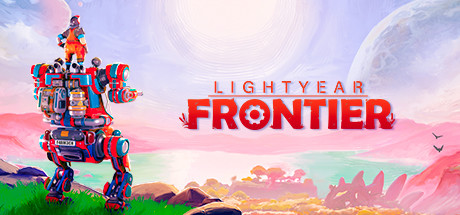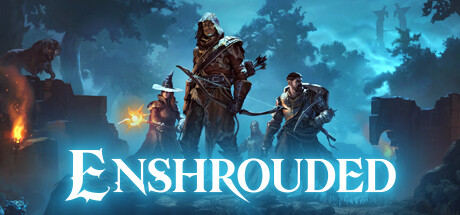- Starfield – PC Review - January 30, 2024
- Dungeon Drafters – PC Review - January 15, 2024
- Trinity Trigger – PC Review - December 5, 2023
Genre: Cyberpunk-themed visual novel
Developer: Vivid Foundry Corp.
Publisher: Vivid Foundry Corp.
Release Date: Mobilizing in 2022
Edited by AlexKnight2005
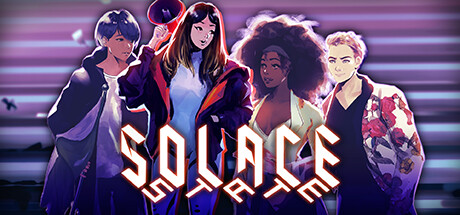
Although it doesn’t appear so upfront, make no mistake: Solace State is a visual novel done in a highly stylized art style. When I looked at it originally I made exactly that mistake. The kinetic typography should have cued me in, but I missed it until about halfway through the intro sequence. They make much of the setting, such as at the front end, which one might expect of a modern JRPG. That’s not a Good Thing—the fun part of having a potentially unlimited amount of text available to you gives you the freedom to weave the worldbuilding across the entirety of the game. You start with the bare minimum to hook the readers into the scene you’re doing and expand everything else as you need it. With Solace State, there’s a huge info dump that takes up nearly the entire first chapter while cleverly done (with clicky bits if you want more, albeit shallow, information), ultimately will kill the interest of the average reader.
Add to that the rather on-the-nose politics that drips from nearly every word, and you have a potential disaster that’s unlikely to age well. The game is gorgeous, but I’m not entirely sure that’s going to enough to save it. The demo we’re talking about here is what it says on the tin. Unlike most demos, however, they don’t give you the first chapter or two and let you run with it. They give you chapters one and three and a short description of what happened in the second. I’m not sure why they made that particular decision, but I suspect there’s information in there someplace that they want to keep under wraps.
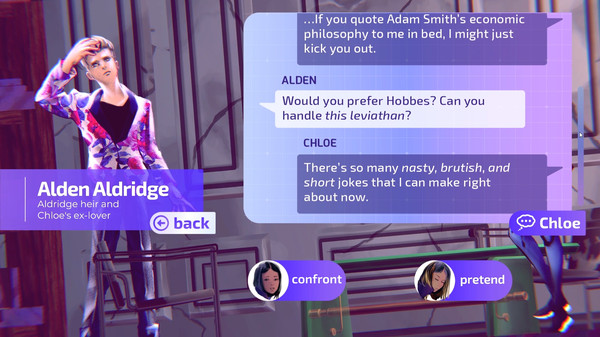
More likely, that is, the interactions that make up the bulk of chapter three are the primary gameplay elements whilst, Chapter 2 is mostly text and conversation choices. Not a thing I’d knock them for, as I’m guilty of the same sort of thing myself on occasion, but the transition from chapter one to three is rather jarring. That said, the gameplay presented in the third chapter is rather intriguing. One gets a look into a local protest, and the way the government forces intend to handle it. Between here and there, there’s a conversational minigame of sorts that appears to take place both physically and virtually, trying to prevent the Bad Thing from happening by performing a little social engineering. The more apt you are at getting and using information against your opponent, the better the results will be. I tried it several times, and there are both positive and negative endings to this encounter. Some of the bad ones can be very dark indeed.
This takes us back to the world the devs are building—despite the game itself being rather bright most of the time, all of its themes are mired, in an oppressive miasma that’s difficult to shake. If that’s what they were going for, then they’ve succeeded beyond their wildest dreams. For the player, there are themes that a great many people will find uncomfortable. Others will be outraged, and yet more will dream of a day when our world mirrors the one in-game. Your mileage may vary, of course. I can only hope that the devs have done their homework—they’ll need to maintain the atmosphere throughout the game.
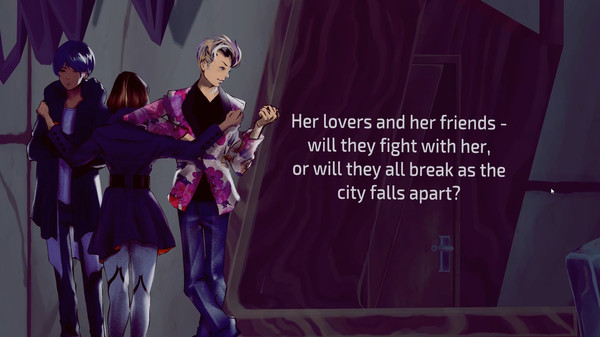
Now, characters—Here’s where the problems lie. Our protagonist is a caricature of a modern super-activist that just so happens to be an expert at every skill she could need to get herself through this particular situation. Her only flaws from what the developers present are those of the player that could misread the situation and thus reacting in a less-than-optimal way. Her partner for the duration of the demo is essentially her male counterpart. This leads to a very mild clash early in chapter three, in which your choice makes no more difference than a couple of lines of dialogue.
Even the person the Bad Thing is going to happen to without our intervention is held up as practically perfect in every way. The other side is presented as almost irredeemably flawed. Rarely do these dichotomies exist in nature, and when they happen in literature, it’s always the result of inexperienced or lazy writing. Don’t get me wrong—every writer has been there at least once. Myself included. This writer appears to be trying to making a statement that will resonate with a small audience. Most others will find it trite and boring.
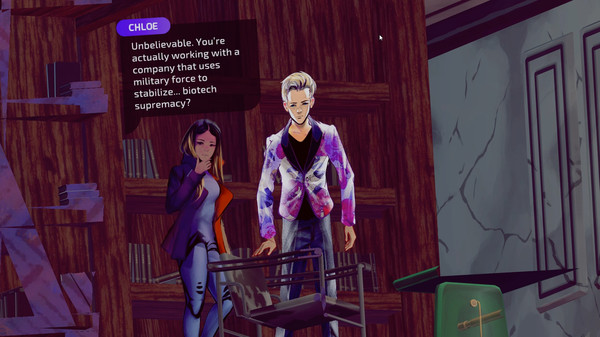
Last and least—music. It’s there. That’s it. After my first five passes through the demo, I had a hard time remembering a single phrase from it even ten minutes later. Going back to concentrating on it there are two pieces of music (one for each scene), one a thirty-second loop. Spotting where the loop stops and ends are difficult unless you’re paying attention, but the content is simpler than the art style. Where the art succeeds, the music falls flat.
That about wraps it up. In the end, it’s a demo. Download it and check it out, and if you want to see more, then go for it.
Pros:
Kinetic typography makes for a neat presentation.
The artwork is simple and effective.
Social engineering and diplomacy as primary gameplay.
Cons:
In-your-face politics.
Characters are too well-suited to their roles.
Writing seems lazy.
Music is forgettable at best.

